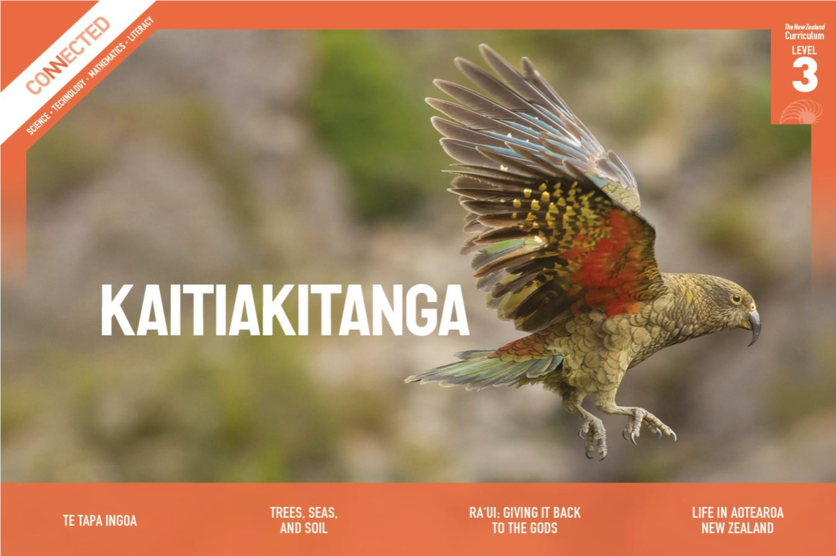This Connected article, written by Matt Boucher, looks at why our wildlife is so distinct and how the species developed and adapted to their current state.
Aotearoa has one of the highest numbers of endemic species of any country in the world. This article gives a short history of how New Zealand separated from Gondwana. The geographical isolation and a lack of ground-dwelling predators led to our flora and fauna evolving unique characteristics, but sudden changes in conditions can severely impact on such highly adapted species. The article introduces and explains the concepts of evolution and adaptation and links to the Nature of Science strand, ‘Understanding about science’. It also highlights how scientists use evidence from fossils and geographic records to make inferences about life in the past.
Check your school library for the article from the 2020 level 3 Connected journal ‘Kaitiakitanga’, download it as a Google slide presentation from Tāhūrangi or order it from the Ministry of Education.
The teacher support material (TSM) can be downloaded from Tāhūrangi (Word and PDF files available).
It has two learning activities, both include extension ideas, that support the exploring science aspects of the New Zealand Curriculum.
- Evolution: it takes time – students create their own interactive timeline about the formation of New Zealand and the evolution of the species that live here. Students conduct a ‘what if?’ scenario activity as an extension.
- Finding a niche – focuses on adaptation and uses the Classifying bird adaptations worksheet and the article on the takahē’s ecological niche. The extension activity idea suggests using the New Zealand Garden Bird Survey.
Related content
Investigate how New Zealand came to have such unique ecosystems, one dominated by birds.
See this timeline of New Zealand's changing ecosystem.
Check out our entire range of Connected articles here. We’ve curated them by topic and concepts.
In addition to the links within the article, see these resources below:
Plants
- New Zealand native trees – an introduction
- The uniqueness of New Zealand plants
- Investigating our fern flora origins
Birds
- Building Science Concepts: Birds
- Native bird adaptations
- Takahē – an introduction
- Conserving our native kiwi
Fungi, invertebrates and more
Connected articles
- Squawkzilla, 2020, Level 2 – the discovery of Squawkzilla, a giant parrot that lived in New Zealand 19 million years ago.
- On the Move, 2016, Level 3 – using technology to track animal migrations.
- Listening to the Land, 2018, Level 3 – recording mātauranga from iwi and hapū about plants and animals, aiming to connect it to particular times and places in history.
Activity ideas
These activities ask your students to design a habitat for a New Zealand species but could be adapted for other species:
About the author
Read about citizen science projects Matt Boucher incorporated while working as a classroom teacher in this case study.
Useful links
Building Science Concepts, Book 3: Birds: Structure Function and Adaptation.
The Connected journals can be ordered from the Down the Back of the Chair website. Access to these resources is restricted to Ministry-approved education providers. To find out if you are eligible for a login or if you have forgotten your login details, contact their customer services team on 0800 660 662 or email orders@thechair.education.govt.nz.
Acknowledgement
The Connected series is published annually by the Ministry of Education, New Zealand.


